Your search for "painting" matched 85 page(s).
Showing results 71 to 80.
-
 Red Woman
Red Woman
Red Woman was one of Marc’s last paintings containing the human figure and reflects the humanistic idea of man’s interrelationship with nature. A ‘primitive’ woman, untouched by the corrupting influence of civilisation, is harmoniously absorbed into…
-
 Thou Shalt Not Kill!
Thou Shalt Not Kill!
Reconstruction, with original fragments. Johannes Koelz (1895-1971) was born in Muehldorf, Bavaria. He entered the Munich Academy of Art but his studies were interrupted by the outbreak of World War 1. After the death of his brother Hans, killed in…
-
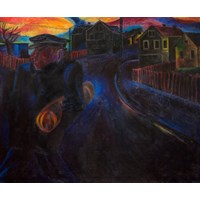 Autumn Evening, Klotzsche
Autumn Evening, Klotzsche
This painting, depicting a sunset scene with a factory worker returning from his shift, belongs to a highly significant series of paintings Felixmüller produced in the early 1920s. The artist’s brother was a mining engineer, and Felixmüller produced…
-
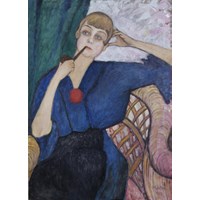 Portrait of Anna Roslund
Portrait of Anna Roslund
Münter met the Danish writer, Anna Roslund, shortly after her move to Copenhagen from Sweden in 1917. In Sweden she had renewed her interest in Matisse and abandoned her earlier Bavarian primitivism. Deep in thought, the stylish, pipe-smoking writer…
-
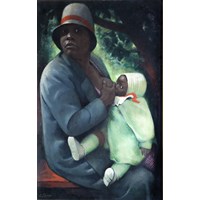 In Search of the Black Mother
In Search of the Black Mother
The story of Ernst Neuschul and the “Black Mother” This picture was painted in 1931 by Ernst Neuschul, who was born near Prague in 1895 to a Jewish family. They ran a hardware store, but he trained as an artist in Prague and Vienna and worked in…
-
 Black Mother
Black Mother
Neuschul’s paintings of unemployed workers, Gypsies and black people provoked Goebbels into having his pictures vandalised in an exhibition in 1933. Neuschul portrays the breastfeeding mother with a monumental dignity, her watchful eyes indicating…
-
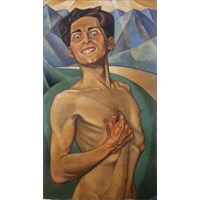 Messiah
Messiah
Ernst Neuschul was a painter of the Neue Sachlichkeit, or ‘New Objectivity movement, which arose in post WW1 Germany. Prior to this between 1919-1926 his interests included Freudian psychoanalysis, sexual liberation, spiritualism and yoga. During…
-
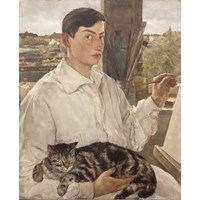 Self Portrait with a Cat
Self Portrait with a Cat
Laserstein depicts herself completely objectively in her Berlin studio as an emancipated woman and professional artist, aware of her individuality and unconcerned by her unconventional appearance. Her half-turned figure recalls the portraits of Hans…
-
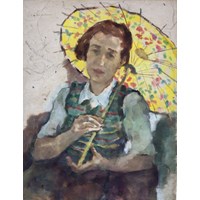 The Yellow Parasol
The Yellow Parasol
From about 1931 onwards, Laserstein began to adopt a looser, more fluid technique, her brushstrokes more impressionistic. This portrait of Laserstein’s close friend and favourite model Gertrud Rose (Traute Rose) is relaxed and informal. The image of…
-
 Woman Applying Make-up
Woman Applying Make-up
The image of the woman applying her make-up is a powerful one. Painted in Berlin at the height of the Weimar years, it gives an insight into the changing fortunes of young metropolitan working women who, in the mid-1920s were achieving greater…